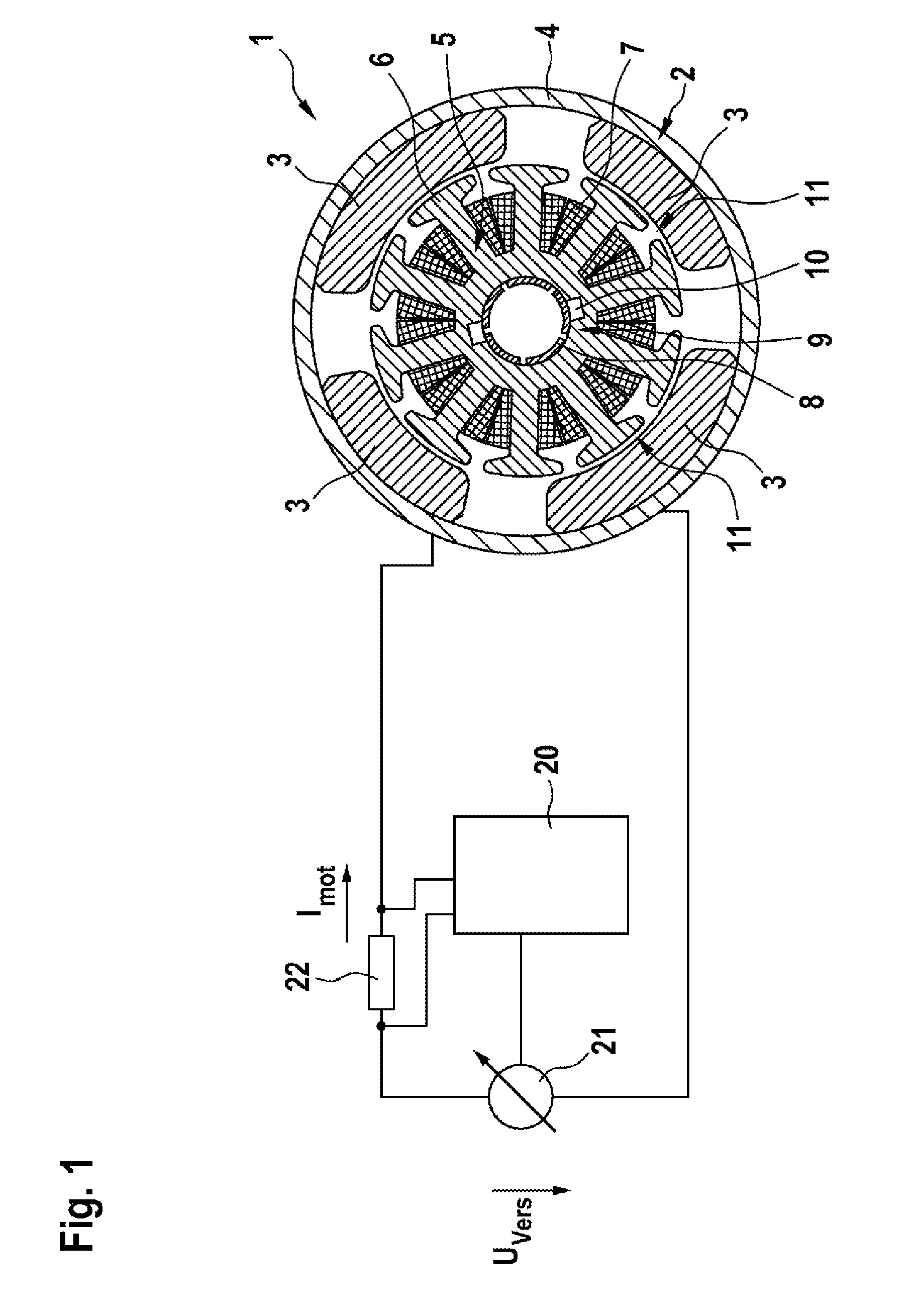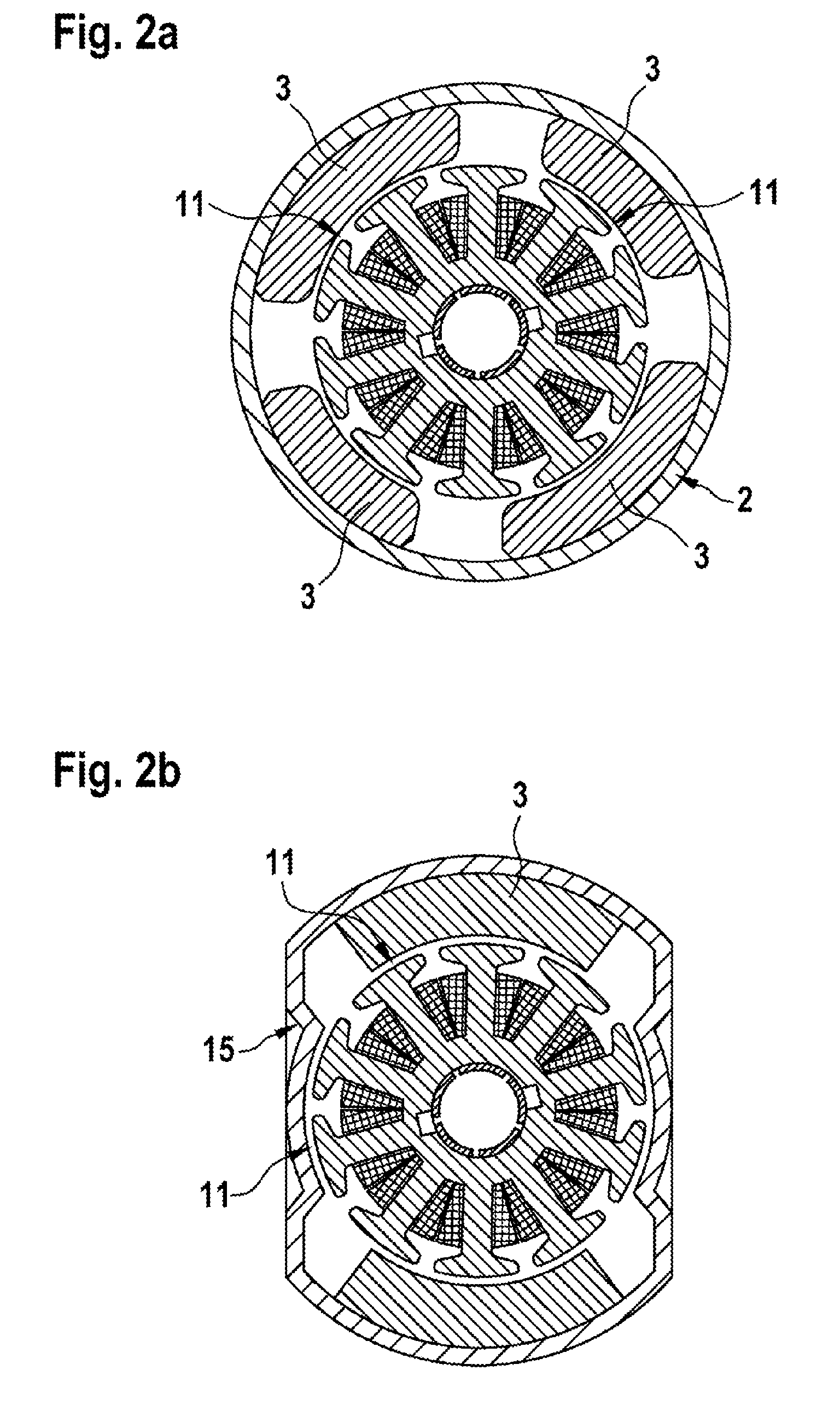Method and apparatus for determining a rotor position and rotation speed of an electrical machine
a technology of rotor position and rotation speed, which is applied in the direction of electronic commutation motor control, motor/generator/converter stopper, dynamo-electric converter control, etc., can solve the problem that the brushes are not suitable for operation
- Summary
- Abstract
- Description
- Claims
- Application Information
AI Technical Summary
Benefits of technology
Problems solved by technology
Method used
Image
Examples
Embodiment Construction
[0023]FIG. 1 shows a schematic illustration of a motor system 1 comprising an electric motor 2 as electrical machine. The electric motor 2 is a brush-commutated DC motor comprising a stator 4, which is provided with one or more permanent magnets 3, and a rotor 5 which is rotatably mounted in an interior of the stator 4.
[0024]The stator 4 is formed with stator poles 11 which produce a stator magnetic field, which is produced by the permanent magnets 3 (stator magnets), in the interior of the stator 4, said stator magnetic field alternating along a circumferential direction. In the present exemplary embodiment, the electric motor 2 is formed with four stator poles 11. Alternative embodiments can also provide more than four stator poles 11, such as six stator poles for example.
[0025]In the illustrated exemplary embodiment, the rotor 5 has ten rotor poles 6 (rotor teeth) which are each surrounded by a rotor coil 7. The rotor coils 7 are each electrically connected to two commutator lami...
PUM
 Login to View More
Login to View More Abstract
Description
Claims
Application Information
 Login to View More
Login to View More - R&D
- Intellectual Property
- Life Sciences
- Materials
- Tech Scout
- Unparalleled Data Quality
- Higher Quality Content
- 60% Fewer Hallucinations
Browse by: Latest US Patents, China's latest patents, Technical Efficacy Thesaurus, Application Domain, Technology Topic, Popular Technical Reports.
© 2025 PatSnap. All rights reserved.Legal|Privacy policy|Modern Slavery Act Transparency Statement|Sitemap|About US| Contact US: help@patsnap.com



